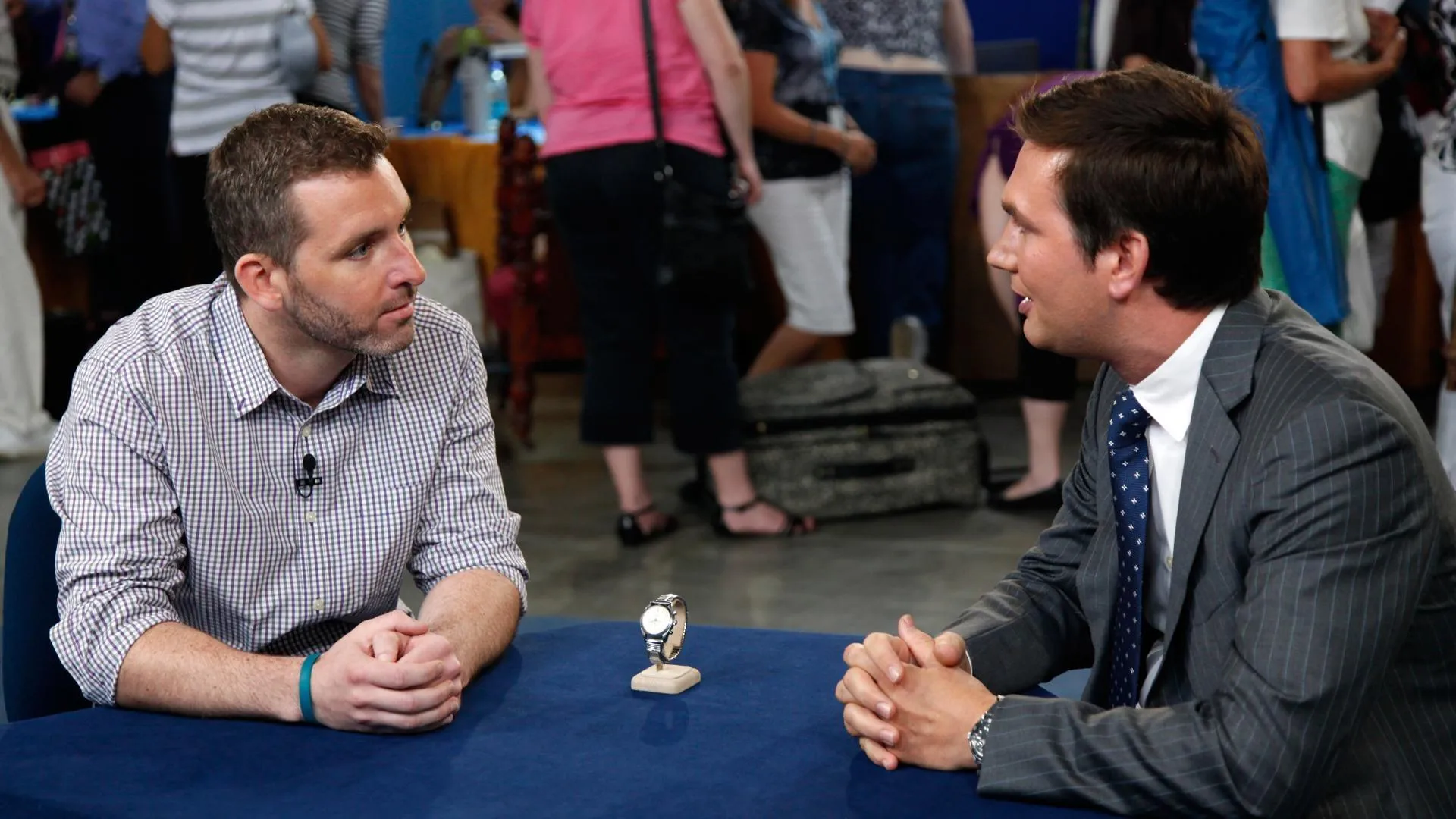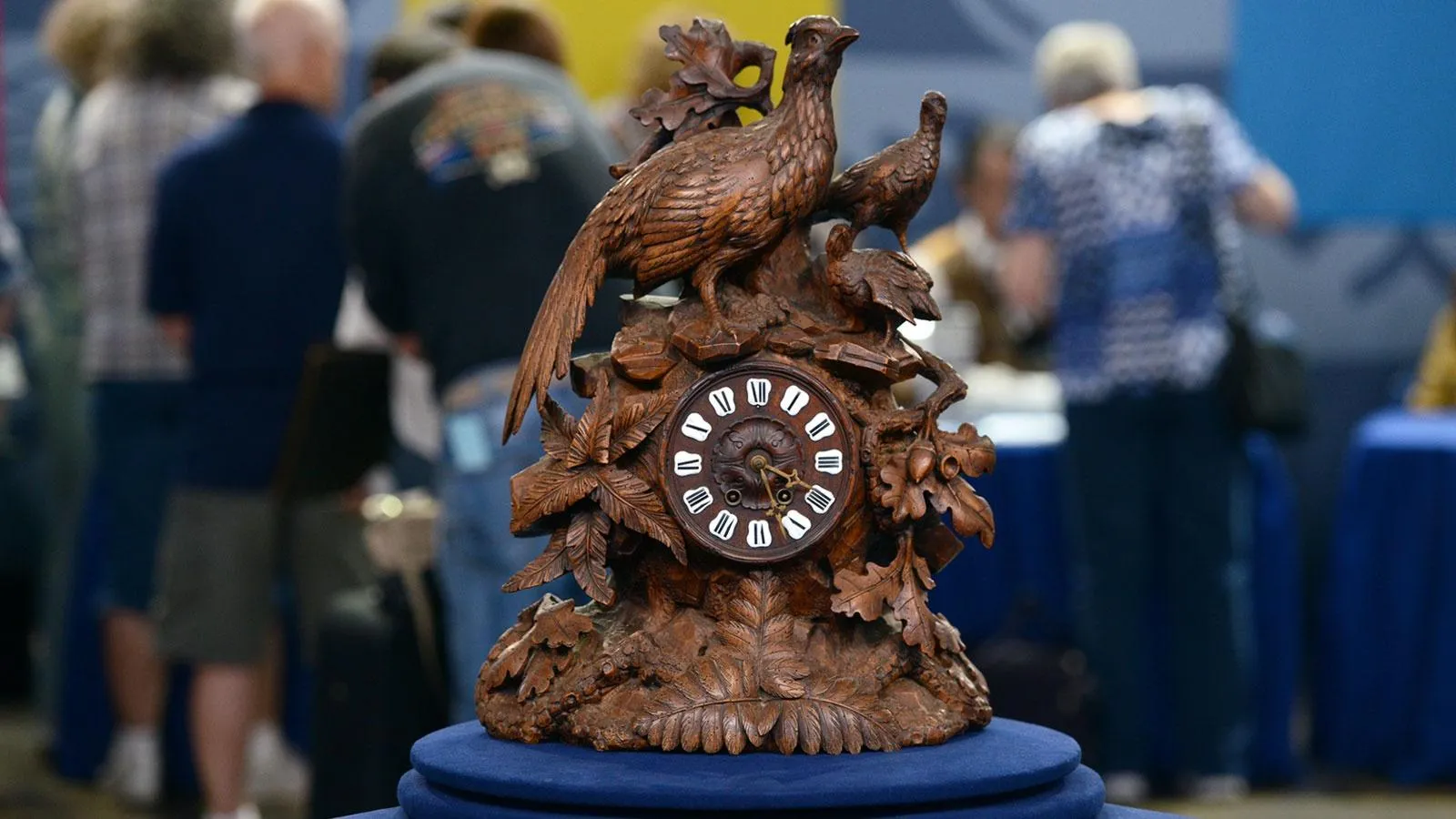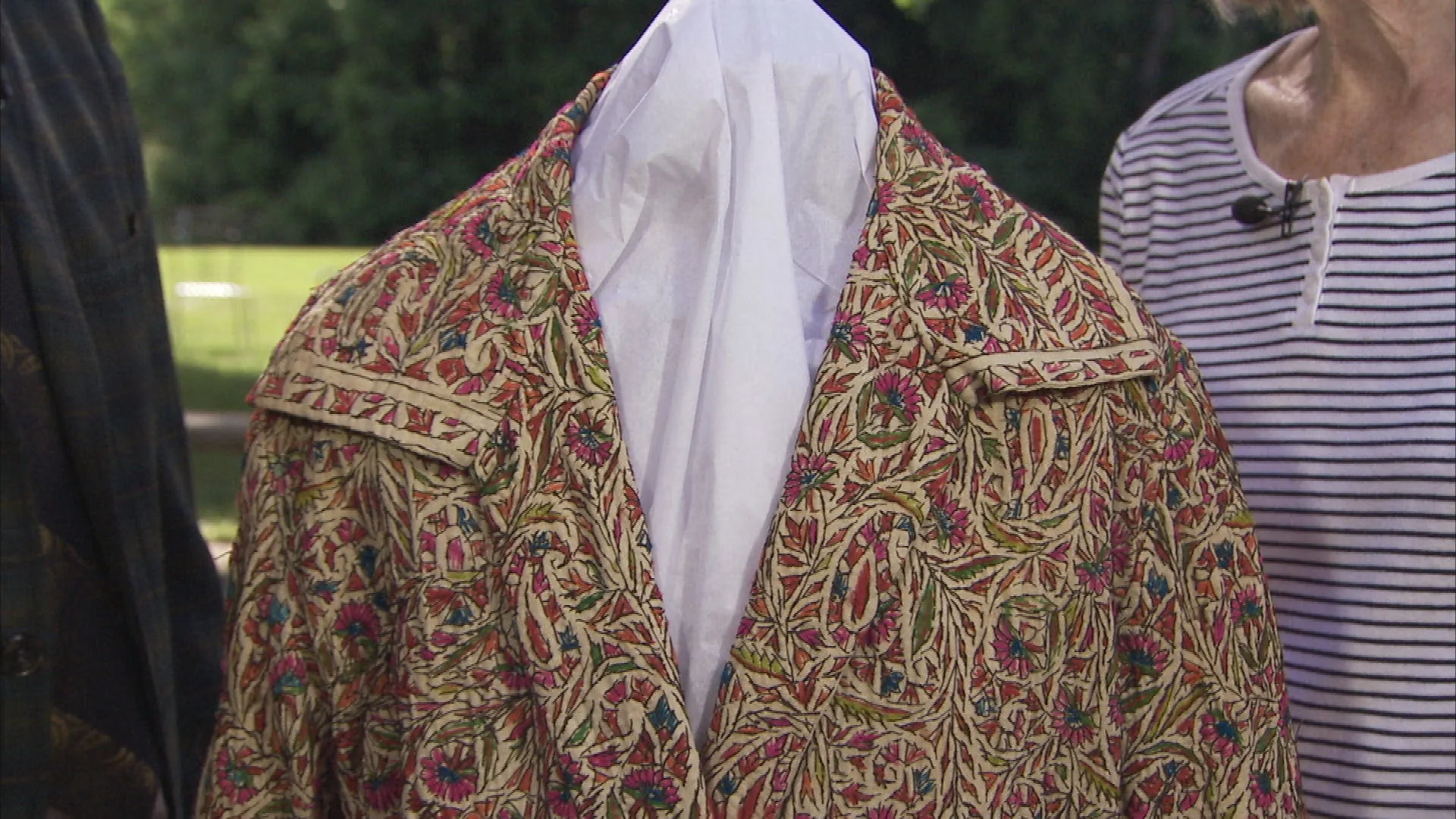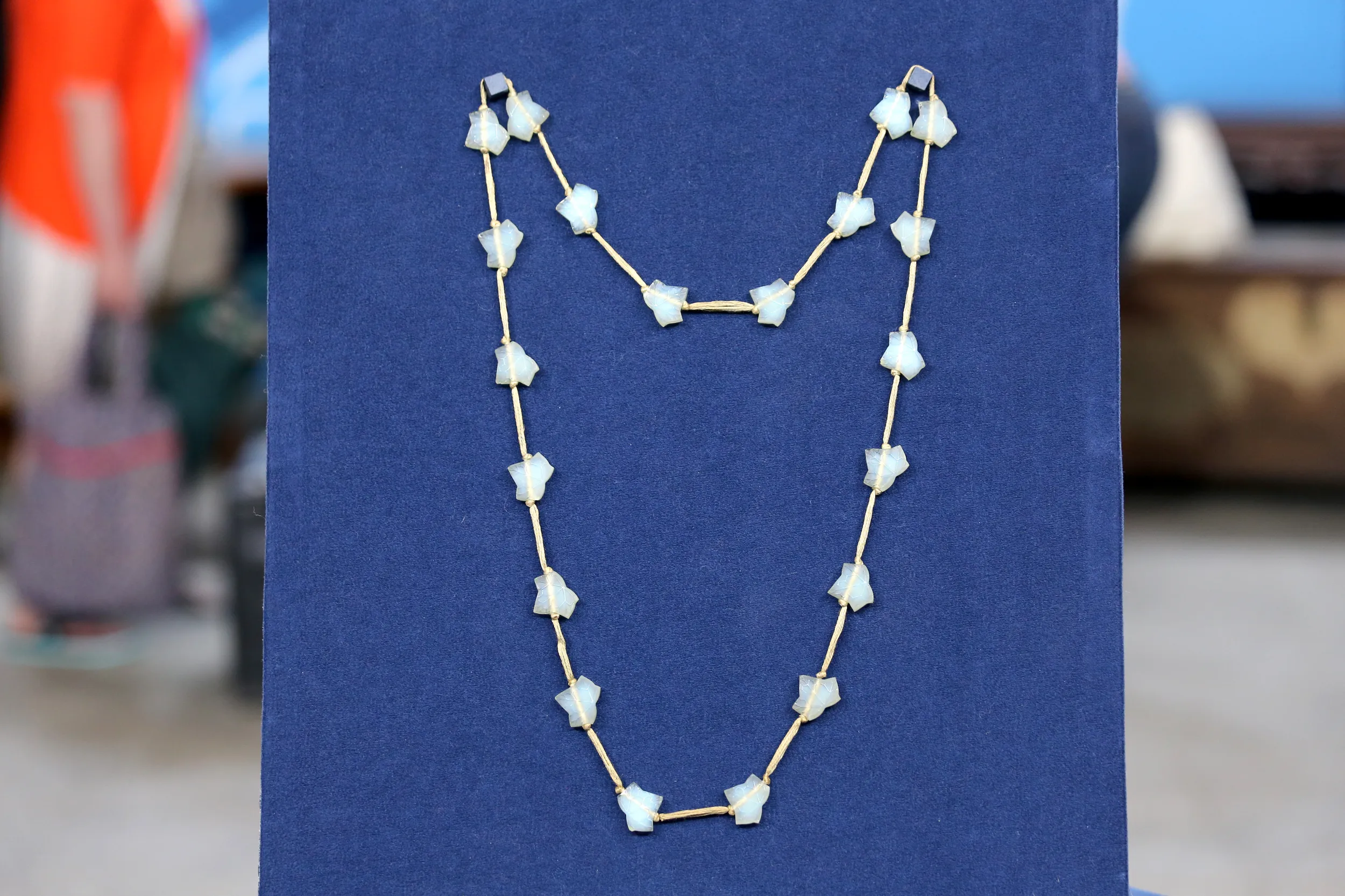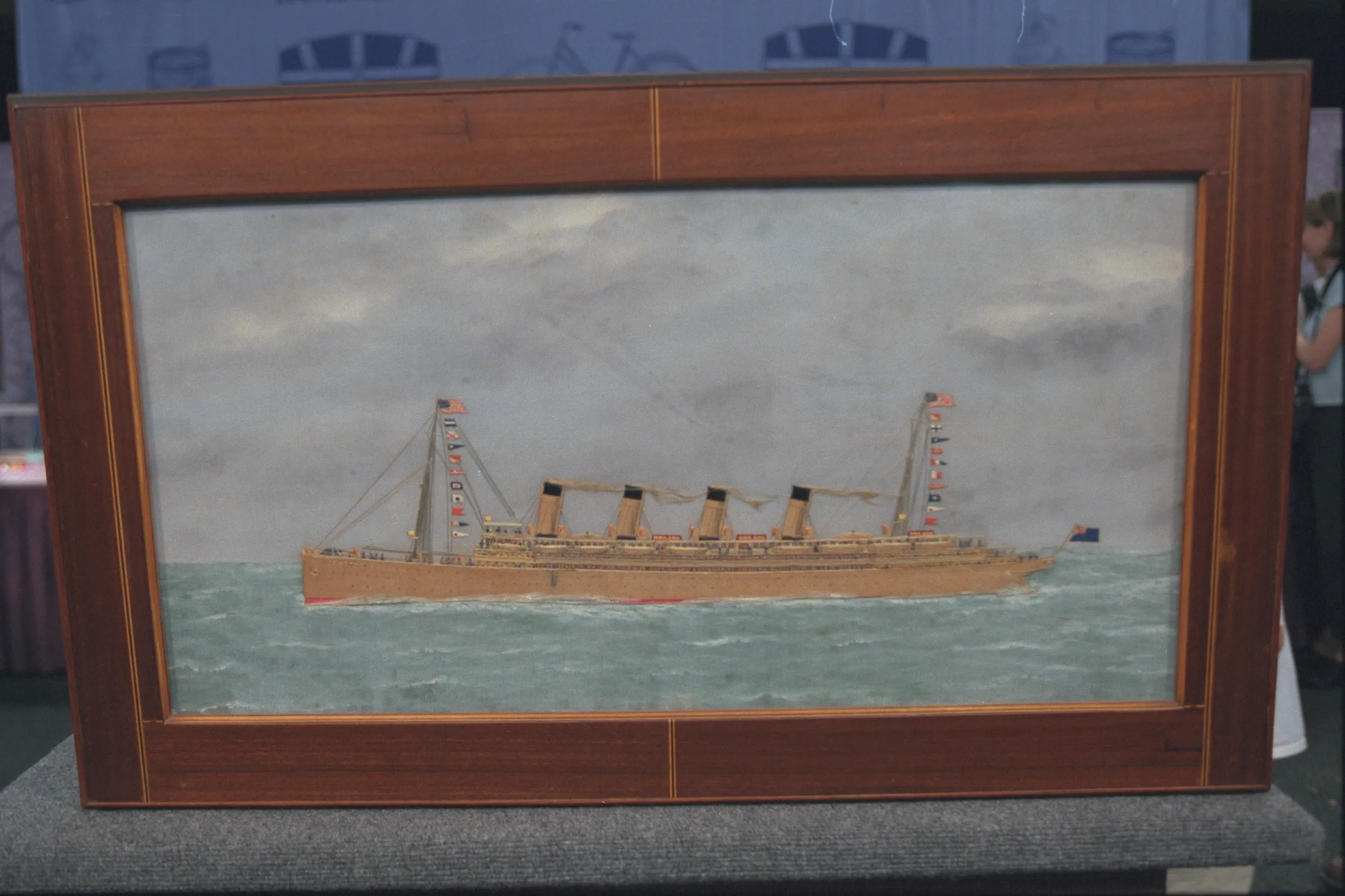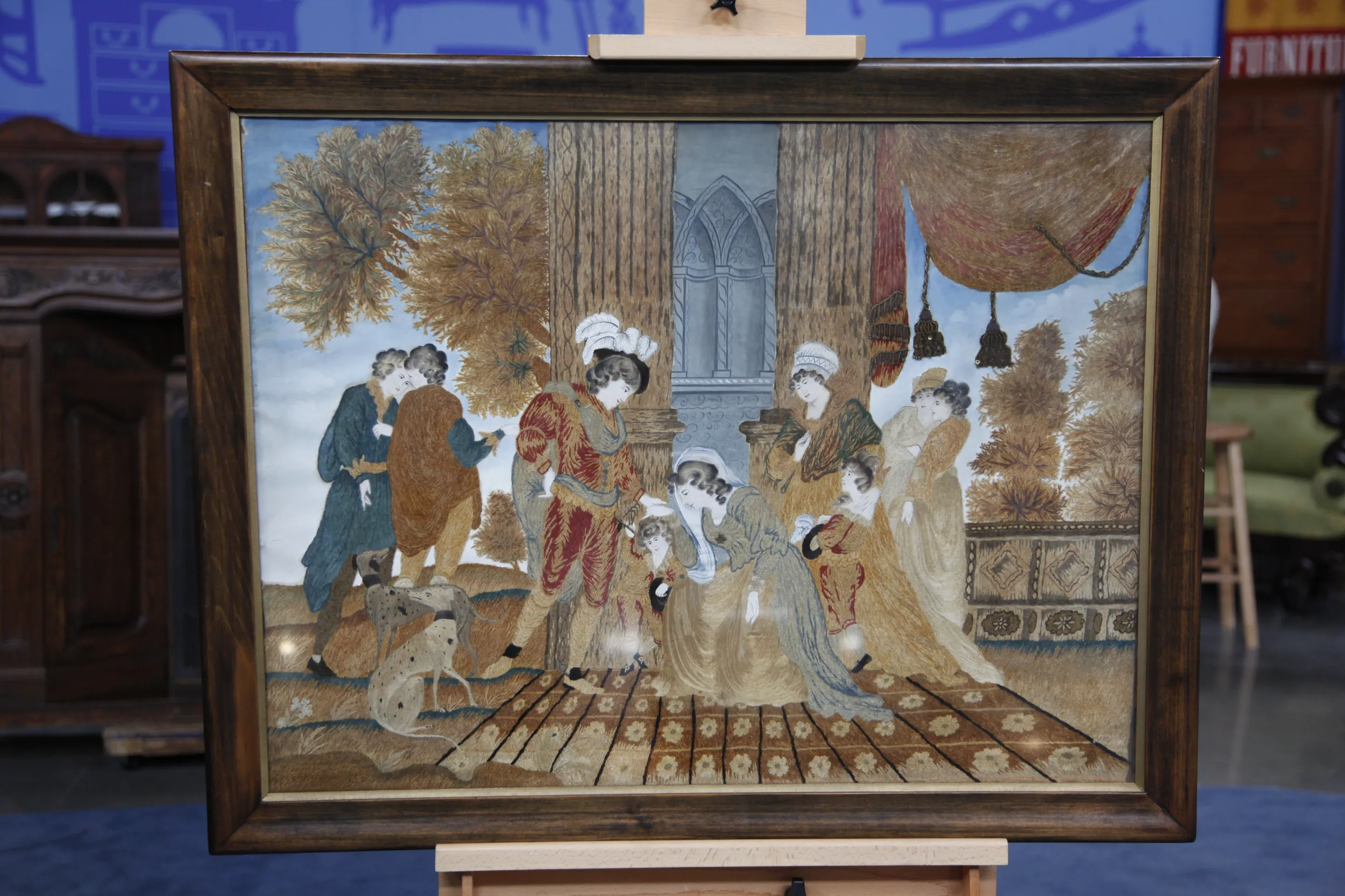GUEST: I came by it through my parents, and they're gone. So it went to my sister, she's gone. So I have it now. (chuckles)
APPRAISER: And do you know where they, they acquired it?
GUEST: My parents were traveling in Europe right after World War II. I think he had business over there, and they came upon this in France.
APPRAISER: Mm-hmm.
GUEST: And brought it back, that was maybe the late '40s.
APPRAISER: And do you know where in France they acquired it?
GUEST: I heard it was from Aubusson.
APPRAISER: Mm-hmm.
GUEST: Where they used to make the old tapestries.
APPRAISER: It is from Aubusson. It is a tapestry from the mid-20th century. I would put a date 1945 to 1950 on it. The cartoon, which is the design of the tapestry, was done by a gentleman named Jean Lurçat, who is, without a doubt, the premier tapestry designer in France, of mid-20th-century France.
GUEST: Ooh La, la! (chuckles)
APPRAISER: He is also a painter, also was a carpet designer, but he's really best known for his tapestry designs, his cartoons, and he really was one of the driving artists behind the revitalization of the Aubusson tapestry looms in the mid-20th century, after the war, to make these very modern, fantastic pieces. It's a handwoven tapestry weave. They still had trained artisans in the town of Aubusson. This particular piece, while designed by Lurçat, was made and woven by a company called Pinton Brothers, which was one of the leading Aubusson workshops in the mid-20th century. Lurçat, his signature's here in the bottom corner, but next to it is a "P.F.," which is Pinton Frères, which is Pinton Brothers. The name of this tapestry is "Gobi." It's inspired by a night scene in the Gobi Desert in China.
GUEST: You mean, you recognize it!
APPRAISER: Which is why you have kind of bamboo-looking...
GUEST: Yeah.
APPRAISER: …motifs through the tapestry, and these blue dots that are kind of hinting at stars as a night scene. By the modernism of the mid-20th century, everything was highly stylized. They were suggestions of ideas, as opposed to really naturalistic depictions. I know a lot about Lurçat, I know a lot about Lurçat tapestries.
GUEST: You do, hey.
APPRAISER: This is one of the greatest ones I've ever seen.
GUEST: (gasps) Really?
APPRAISER: Lurçat tapestries can tend to be quite busy, a little too much going on. This has a cleanness to it that is really, to me, the best of mid-20th century French tapestry.
GUEST: Yeah, it's...
APPRAISER: Do you have any idea of value?
GUEST: Well, I was thinking maybe, uh, $5,000.
APPRAISER: The retail value is $15,000, because it's really quite a remarkable tapestry.
GUEST: Whoa.

